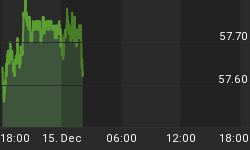For several weeks now, I have argued that extremes in bearish sentiment are a "fat pitch." Why? Because market gains can be rather dynamic if the market reverses. The other factor that has made this a "fat pitch" environment has been the ability to define our risk. If the market did not reverse higher while investor sentiment was bearish (i.e., bull signal), then it was likely meaningful suggesting significant down side risk.
However, the market has forged a bottom here albeit a tenuous one. Admittedly, the price action, volume, and leadership has been rather weak, and whether we get follow through is still in question. Nonetheless, the bounce over the past 3 weeks has done one thing: it has helped to define our downside risk.
Figure 1 is a weekly chart of the S&P Depository Receipts (symbol: SPY) with key pivot points in red. Key pivot points are the most important areas of support (i.e., buying) and resistance (i.e., selling). The most recent key pivot point - as a result of the bounce - comes in at 107.58. With sentiment becoming bearish (i.e., bull signal), we would expect buying and this is what happened. This area (107.58) is support, and if prices close below this level on a weekly basis, there is a high likelihood of much lower prices.
Figure 1. SPY/ weekly
If we look at figure 1, we note that closes below prior key pivot points (i.e, price bars labeled A, D, E, and F) led to significant and abrupt losses. These are support levels and closes below these levels imply the start of a new trend. Of course, not all is perfect and nor is this method the holy grail. The break below the key pivot at point B didn't lead to significant downside and resulted in the reversal at point C.
But from this perspective and the important point of this article: a weekly close below a key pivot level should be respected.
The corresponding key pivot on the Power Shares QQQ Trust Series (symbol: QQQQ) comes in at 45.01. Figure 2 is a weekly chart of the QQQQ with key pivot points in red.
Figure 2. QQQQ/ weekly
















